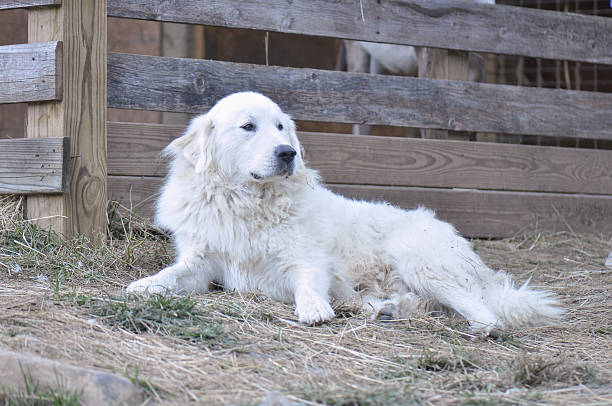Great Pyrenees

Breed History:
The Great Pyrenees, or Pyrenean Mountain Dog, originated in the Pyrenees Mountains between France and Spain. It has a history dating back to at least 1000 B.C., where it served as a livestock guardian protecting sheep from wolves and bears.
Favored by French nobility in the 17th century, the breed was declared the Royal Dog of France in 1675. Despite its noble reputation, the Great Pyrenees remained a working dog at heart, especially prized for its calm demeanor and independent guarding ability. Today, it’s known both as a family guardian and an active working dog on farms and ranches worldwide.
Considering adopting a Great Pyrenees or a similar flock guardian breed? Check out our page "How to look after a Kurdish Kangal" detailing what to consider before adopting and our recommended products for a Kurdish Kangal and other flock guardian breeds.
|
Gender |
Height |
Weight |
|
Male |
70-80 cm |
40-45 kg |
|
Female |
65-75 cm |
35-40 kg |
Size – Medium-Large
Life Expectancy: 10 years

Breed Appearance:
The Great Pyrenees is a large, majestic dog known for its thick, weather-resistant double coat and imposing yet gentle expression. They possess a powerful, well-proportioned body, floppy ears, and a gracefully curved tail that exudes elegance. Their long, dense coat, which requires regular brushing, comes in various shades of white, cream, and sometimes brindle. Great Pyrenees have deep, soulful eyes that express kindness, wisdom, and quiet dignity.
Breed Type - Family/guard:
Devoted and affectionate, they form strong bonds with their families, displaying gentleness, especially towards children, particularly when raised with them from puppyhood. Their calm and serious demeanour makes them well-suited for households seeking a loyal and protective pet.
As natural guardians, they have a history of being used to protect livestock, showcasing their courage and loyalty, even to the point of self-sacrifice. This breed's protective instincts make them excellent guard dogs.

Training:
Training a Great Pyrenees requires patience, firmness, and consistency. While intelligent, the breed is:
-
Independent-minded and strong-willed
-
Slow to mature (puppyhood can last 2–3 years)
-
Responsive to positive reinforcement methods
Early socialization and basic obedience are critical. Harsh training methods should be avoided, as they can damage trust.
Health & Care:
Generally healthy, but watch for:
-
Hip and elbow dysplasia
-
Bloat (gastric torsion)
-
Patellar luxation
-
Entropion or ectropion (eyelid disorders)
-
Skin issues in warm, humid climates
Reputable breeders test for these conditions. A balanced diet, controlled growth in puppies, and regular vet care support longevity and comfort.

Living Conditions:
This breed needs space and purpose. It thrives in rural or suburban settings with secure fencing and is not suited to apartment life. Great Pyrenees are nocturnal by nature—bred to guard flocks overnight—and may bark at night.
They can adapt to family life but do best in calm homes with experienced dog owners. They may be reserved with strangers and protective of property.
Exercise:
Despite their size, they are not overly active indoors but still require daily activity:
-
Daily walks (45–60 minutes)
-
Free-roaming in a secure yard
-
Light jogging or hiking is fine in cooler weather
Avoid intense exercise in heat due to their thick coat. Mental stimulation through guardian tasks, training games, or light agility can help.
Grooming:
Moderate to high grooming needs:
-
Weekly brushing, daily during seasonal shedding
-
Heavy shedding twice a year (spring and fall)
-
Occasional baths; the coat naturally sheds dirt
-
Clean ears, trim nails, and maintain dental hygiene
Despite the thick coat, it is relatively self-cleaning in dry conditions.

Advantages:
-
Calm, gentle, and affectionate with family
-
Excellent natural guardian
-
Loyal, protective, and trustworthy with children
-
Majestic appearance and serene personality
-
Independent and confident
-
Low doggy odor despite dense coat
Disadvantages:
-
Strong-willed and slow to mature
-
Requires consistent training and early socialization
-
Heavy shedder—especially during coat blow seasons
-
Not ideal for apartment living or warm climates
-
May bark at night due to guarding instincts
-
Needs secure fencing to prevent wandering
-
Protective nature may cause issues with unfamiliar people or animals

